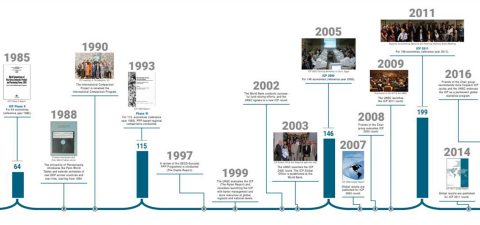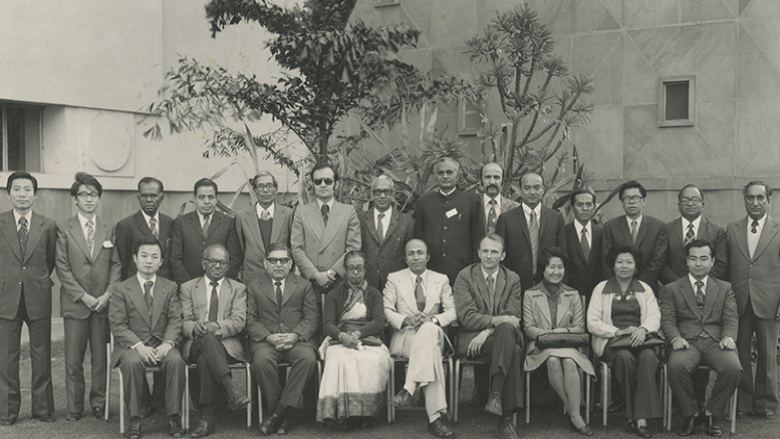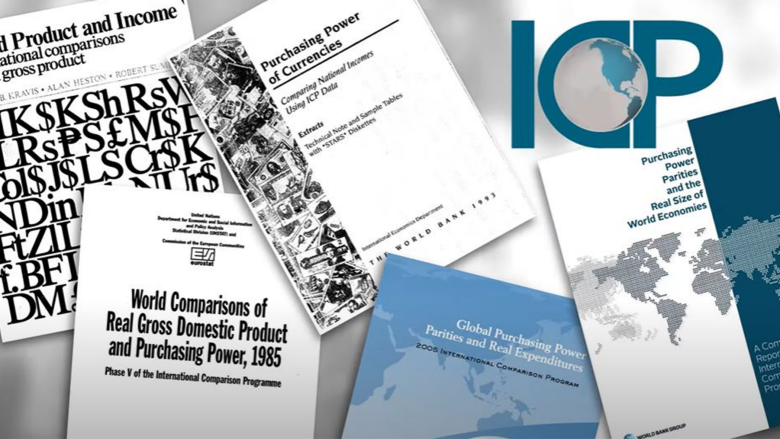The ICP was established in 1968 as a joint venture of the United Nations Statistical Division (UNSD) and the International Comparisons Unit of the University of Pennsylvania with financial contributions from the Ford Foundation and the World Bank. It started as a modest research project, but the ultimate goal was to set up a regular program of global PPP-based comparisons of GDP.
The initial intent was to cover GDP from both the expenditure and production side of national accounts. To date, comparisons have only been made from the expenditure side since they are less difficult to implement in practice. They involve only one set of final expenditures, whereas comparisons from the production side involve both outputs and inputs and have the added complexity of double deflation.
Comparisons of final expenditure on GDP have been completed for 1970, 1973, 1975, 1980, 1985, 1993, 2005, 2011, 2017, and 2021. Country participation consisted of 10, 16, 34, 60, 64, 115, 146, 199, 178, and 176 economies, respectively.
After the 1975 comparison, the ICP discarded its research status and became a regular part of the UNSD work program and was regionalized. United Nations regional commissions organized regional comparisons which the UNSD oversaw and coordinated to ensure that they could be combined in a global comparison.
With regionalization came the emergence of the Eurostat-OECD PPP Programme in the early 1980s. In the beginning, the program followed the same five-year cycle as the ICP and covered only European Union (EU) member states and Organisation for Economic Co-operation and Development (OECD) member countries. Since 1990, the program has operated on a three-year survey cycle and coverage has been extended to European countries that are not members of either the EU or the OECD. Today, the Eurostat-OECD Programme publishes annual benchmark comparisons.
1993 was the first time that all regions of the world were covered, but no global comparison was made. As a result, the United Nations Statistical Commission (UNSC) reviewed the ICP. The World Bank proposed a new strategy to address limitations and improve the program.
At its 33rd session in 2002, the UNSC reviewed and endorsed a new strategic framework for the ICP, including an international governance arrangement and a broad implementation plan. The 2005 ICP produced estimates of the relative price levels of GDP and its principal aggregates for 146 economies, including approximately 40 more economies than the 1993 cycle. This was the first time that China participated in the ICP and the first time since 1985 that India participated. This comparison included 48 African economies, which represented more participating countries than ever before. New methods were developed and used to overcome shortcomings of the previous data collection and estimation processes.
Following its successful completion of the 2005 cycle, the UNSC at its 39th session in 2009 requested the World Bank to host the Global Office and take on the global program coordination of the 2011 cycle. The ICP 2011, with its considerably expanded coverage (from 146 to 199 countries), attracted a broader acceptance compared to earlier exercises. Following their improved availability, the use of PPPs around the world has increased. In addition, the applied methodology significantly improved over that of the 2005 cycle. ICP 2011 placed ICP on a firm methodological basis by introducing several methodological innovations, including a new approach for combining regional results into a global set of results.
The 47th Session of the UNSC, held in March 2016, discussed the future of the ICP, in light of the recommendations of the Friends of the Chair group on the evaluation of ICP 2011. Based on this discussion, the UNSC decided to institute the ICP as a permanent element of the global statistical work program. Starting in 2017, the program is regularly conducted at more frequent intervals. Following the UNSC decision, the World Bank established the ICP Global Office as a permanent unit at the Development Data Group.
The ICP 2017 cycle was conducted for reference year 2017, with the participation of 178 economies, and published its results in May 2020. ICP 2021 cycle was conducted for reference year 2021, with the particpation of 176 economies, and published its results in May 2024. The next ICP comparison for reference year 2024 is currently underway.


